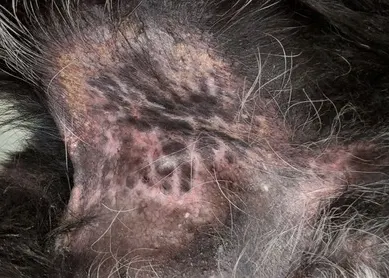Top 5 Preventive Care Tips for Dogs & Cats with Cancer
Haley J. Leeper, DVM, DACVIM (Oncology), Oregon State University

Cancer management in dogs and cats requires both veterinary specialists and general clinicians. Most patients need continued preventive care from the referring clinician in conjunction with chemotherapy or other treatment from a specialty clinic.
Following are the author’s top 5 preventive care recommendations for cancer patients.
1. Vaccinations
Many vaccinations require regular boosters depending on the patient’s lifestyle and federal and/or state regulations.1 The necessity and effectiveness of vaccinations in patients undergoing chemotherapy has been debated in both human and veterinary medicine.2-5 Patients receiving chemotherapy may not be able to mount an immune response if exposed to an infectious agent, making them more susceptible to infection and warranting vaccination; however, immunosuppression caused by chemotherapy may prevent development of adequate immunity following a vaccination or booster.
Few veterinary studies have examined the effects of chemotherapy on immune responses, but existing studies found chemotherapy had no effect on pre-existing antibody titers and less impact than expected on T-cell numbers and ability to mount antibody responses.3-5 Differences between these findings and those in human medicine may be due to disparities in chemotherapy dosages in veterinary medicine, species differences, or need for additional research. Some specialists nonetheless advise delaying vaccinations until chemotherapy protocols are completed.
Antibody titers can be evaluated to determine whether boosters are needed. Uncertainty regarding vaccinations should be discussed with pet owners, and recommendations should be made based on the individual patient. Rabies vaccination is largely regulated by state and local jurisdictions, which may not allow deviation despite concerns about patient health.6 Legal requirements should thus be reviewed during clinical decision-making (see Suggested Reading).
2. Medications & Elective Procedures
Most chemotherapy agents are metabolized and excreted in the body and thus may interact with other medications.
The author is not aware of evidence-based medicine against the use of flea and tick preventives in chemotherapy patients, and anecdotal experience suggests many preventives are safe to administer during cancer treatment. Tick-borne diseases and heartworm infections in cancer patients can complicate chemotherapy protocols.
Transient bone marrow suppression and delayed wound healing associated with chemotherapy may affect elective procedures (eg, dental prophylaxis, mass removals) often performed in patients with cancer. Timing and necessity of procedures should be discussed with owners.
3. Nutrition
Cachexia, anorexia, hyporexia, cancer diets, and raw food or alternative diets may be discussed during an oncology consultation. Discussion related to these topics is often initiated by the owner.7
Cachexia is a metabolic syndrome associated with underlying illness and characterized by loss of muscle mass with or without loss of fat.8 Guidelines for nutritional interventions to prevent or treat anorexia and cachexia in veterinary medicine are sparse.8 Patients receiving chemotherapy may experience transient anorexia, but true incidence is not well-defined.9
In human medicine, cancer diets have been investigated based on research suggesting cancer cells are glucose dependent.10,11 Nutritional recommendations for veterinary patients should focus on nutritionally well-balanced, palatable diets rather than specific formulations because the literature is contradictory and inconclusive.12,13 Owners planning to feed home-prepared meals should first consult a veterinary nutritionist, and owners planning to feed raw diets should be warned of increased risk for pathogen exposure to the immunocompromised patient and members of the household.
4. Supplements & Alternative Medicine
Integrative medicine uses both alternative (eg, herbs, supplements, acupuncture, massage) and allopathic medicine.14,15
There is very little veterinary oncology literature on alternative medicine. Limited peer-reviewed data are available for use of Yunnan Baiyao and turkey tail mushroom (Coriolus versicolor) for treatment of canine hemangiosarcoma, supplemental liver protectants (eg, S-adenosyl-methionine/silybin A and B) for patients receiving lomustine (ie, CCNU) chemotherapy, and sulforaphane and cannabidiol for treatment of dogs with cancer.16-21 Many of the available studies included small numbers, were only performed on cell lines, and did not administer medications in conjunction with other treatment options. Further studies are needed to understand alternative treatments and potential interactions with allopathic medicine. Consultation with an alternative medicine specialist can be recommended.
5. Diagnosis & Management of Toxicoses & Adverse Effects
General clinicians should monitor patients receiving cancer treatment and report toxicoses and adverse effects to the oncologist so dose adjustments or alternate therapy can be pursued as needed.
Transient bone marrow suppression is a common adverse effect of chemotherapy. Most chemotherapy-induced nadirs occur 7 to 10 days after a maximum-tolerated dose of chemotherapy but can vary.22
CBCs with slide reviews can help monitor RBCs, platelets, and leukocyte/neutrophil counts. A circulating neutrophil count <1,000/µL may indicate the immune system is inadequate to fight infection, and risk for sepsis may be increased.23-25 Prophylactic antibiotics and/or hospitalization may be needed.
Rectal temperature should be measured when obtaining CBC in chemotherapy patients. Hospitalization is recommended in febrile and neutropenic patients. The literature on antibiotic use in cancer patients should be reviewed to ensure judicial use.25,26
Rabacfosadine is FDA-approved for treatment of canine lymphoma and is an increasingly common chemotherapeutic for this cancer; dermatologic toxicoses can be an adverse effect. Dermatopathology manifests as areas of alopecia, hyperemia, moist dermatitis, and/or hyperpigmentation in the inguinal region, trunk, and/or ear canals of dogs that can be confused with routine acute moist dermatitis (ie, hot spots) and ear infections (Figure).27 Steroids should be administered and can be added to the chemotherapy protocol and the rabacfosadine dose reduced.

FIGURE 1A
Signs of dermatologic toxicosis following rabacfosadine administration in dogs (A, hyperemia, hyperpigmentation, and scaling in the inguinal region; B, signs similar to acute moist dermatitis following self-trauma; C, alopecia and hyperemia on a pelvic limb [not the site of drug administration])
Conclusion
Cancer patients managed by a specialist also require routine health care management with a general clinician.